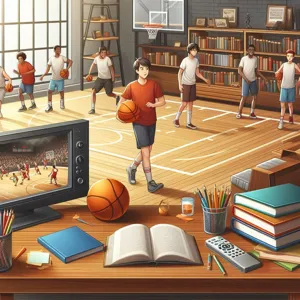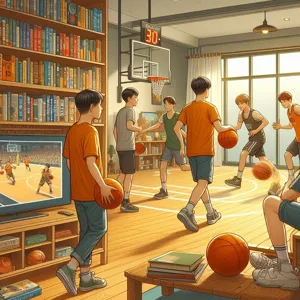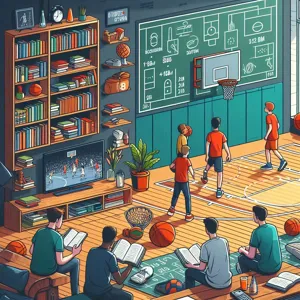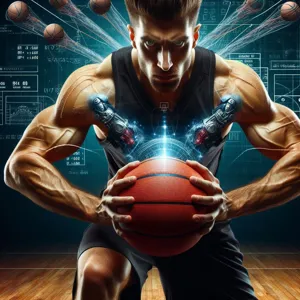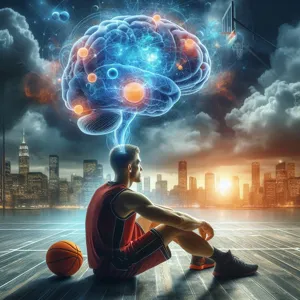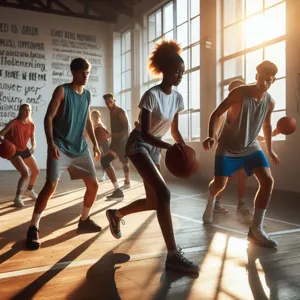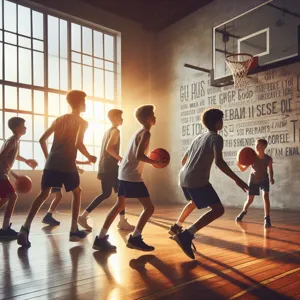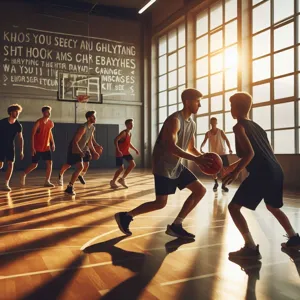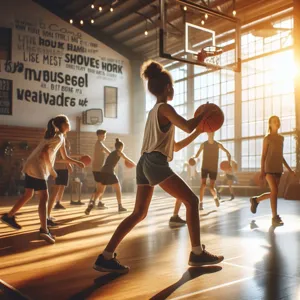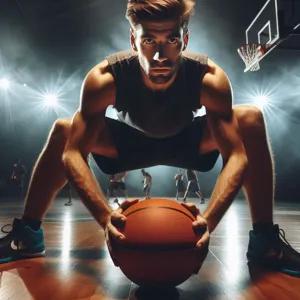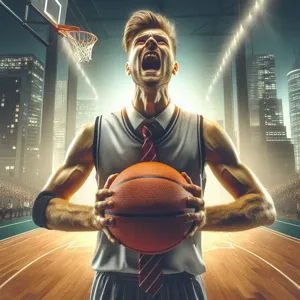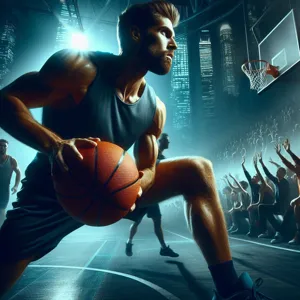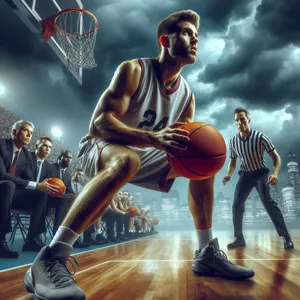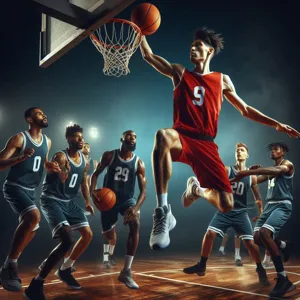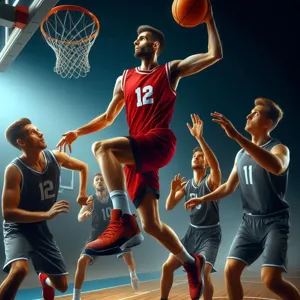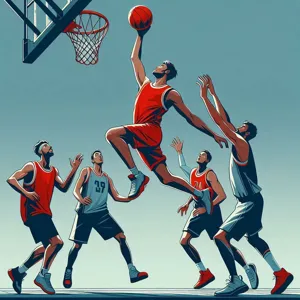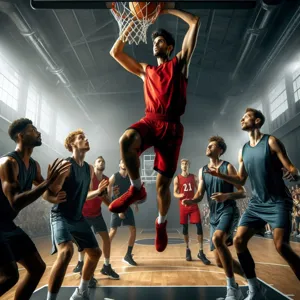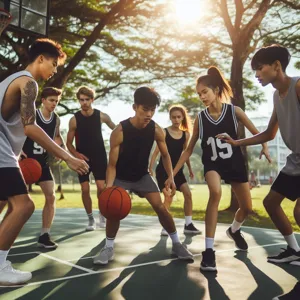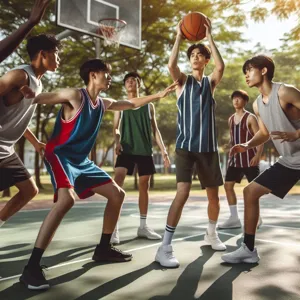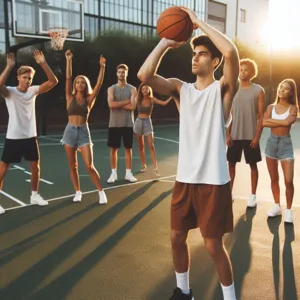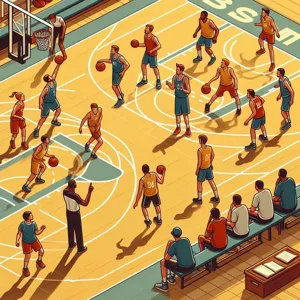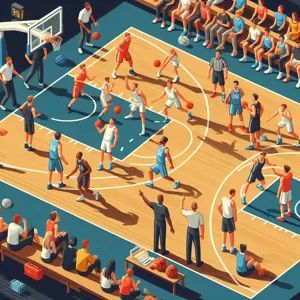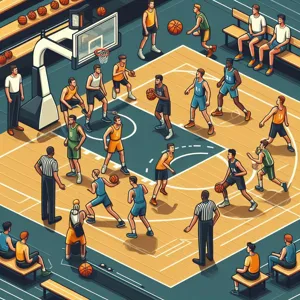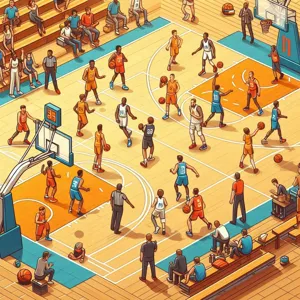In the fast-paced world of basketball, raw talent is only part of the equation for success on the court.
Understanding the game—its nuances, strategies, and flow—sets the great players apart from the good ones. This is where a high basketball IQ comes into play, enabling athletes to anticipate plays, make quick decisions, and optimize their performance under pressure. Whether you’re a budding player looking to elevate your game or a seasoned athlete aiming to refine your skills, boosting your basketball intelligence can unlock new levels of performance. In this blog post, we will explore seven effective strategies that will not only enhance your understanding of the game but also empower you to read defenses, improve teamwork, and make smarter plays. Get ready to dive deep into the art of basketball strategy and take a significant step towards maximizing your potential on the court!
1. Understanding Basketball IQ: What It Is and Why It Matters
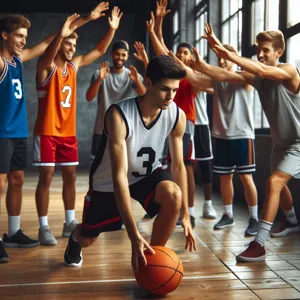
Understanding Basketball IQ is the crucial first step in elevating your game, reflecting a player’s ability to make smart decisions on the court. It goes beyond mere physical skills or athleticism; basketball IQ encompasses tactical awareness, situational understanding, and mental acuity. Think of it as the brainpower behind the game, where knowledge meets instinct, allowing players to read plays, anticipate opponents’ moves, and execute strategies effectively.
So why does Basketball IQ matter? The game of basketball is fast-paced and dynamic, requiring split-second decisions. A player with a high basketball IQ can identify opportunities and threats, adjusting their play in real-time to gain an advantage. For instance, understanding when to pass, shoot, or drive to the basket can mean the difference between a successful play and a turnover. Players with strong basketball IQ also excel in team dynamics; they know how to communicate effectively, understand their teammates’ strengths and weaknesses, and can adapt their playing style to fit the overall game plan.
Moreover, Basketball IQ is essential for long-term success. As players progress through various levels of competition, the game becomes increasingly complex. Those who invest time in developing their basketball IQ will find themselves better equipped to handle the strategic nuances of advanced play. Ultimately, a solid understanding of basketball IQ not only enhances individual performance but also contributes to overall team success, making it an invaluable asset for any aspiring player. By embracing this concept and striving to improve your Basketball IQ, you unlock the potential to elevate your game to new heights.
2. Strategy #1: Study the Game
To truly unlock your potential on the basketball court, it’s crucial to immerse yourself in the game beyond just playing. Studying the game is Strategy #1, and it encompasses a variety of methods that can elevate your basketball IQ to new heights. Begin by watching live games, whether professional or collegiate, and pay attention to the nuances that often go unnoticed. Observe how players position themselves, the decisions they make under pressure, and how they communicate on the floor.
Take the time to dissect game footage, analyzing plays from different angles. There are countless resources available, from highlight reels to full game recaps. Focus on understanding offensive and defensive schemes—what works, what doesn’t, and why. As you watch, ask yourself questions: Why did that player choose to pass instead of shoot? How did the defense adjust after a timeout? This analytical approach will help you see the game from a strategic standpoint, allowing you to anticipate plays and react more effectively during your own games.
Additionally, seek out instructional videos and tutorials from seasoned coaches and players. Many of these resources offer invaluable insights into skills, techniques, and strategies that can be applied directly to your game. Consider reading books or articles focused on basketball tactics and strategies; these can provide a deeper understanding of the game’s intricacies.
Finally, engage with other basketball enthusiasts. Discussing strategy with teammates, coaches, or even friends can open your eyes to new perspectives and enhance your understanding. By actively studying the game, you not only improve your own skills but also foster a deeper appreciation for the sport, setting the foundation for a sharper basketball IQ that will undoubtedly benefit you on the court.
3. Strategy #2: Watch Film and Analyze Play
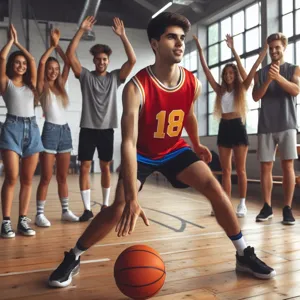
Watching film and analyzing play is one of the most effective strategies to elevate your basketball IQ. It’s not just about enjoying the highlights or reliving the thrill of a dramatic game-winning shot; it’s about dissecting every movement on the court, understanding the intricacies of team dynamics, and learning from both your own performances and those of others.
When you sit down to review game footage, focus on both individual and team plays. Observe how players position themselves, how they communicate, and how they react to different situations. Pay attention to defensive schemes and offensive sets, noting the decisions made in real-time. This kind of analysis will give you insight into what works and what doesn’t, enabling you to make smarter decisions on the court.
Utilizing tools like slow-motion playback and frame-by-frame analysis can help you catch details you might otherwise overlook, such as footwork, spacing, and timing. Consider partnering with a coach or a more experienced player to discuss your observations; their insights can provide a fresh perspective and deepen your understanding of the game.
Additionally, don’t limit yourself to watching just your own games. Study professional matches, focusing on players who excel in positions similar to yours. Consider how they handle pressure situations, their decision-making processes, and their ability to read the game. By analyzing the strategies employed by the highest-level players, you can develop a more nuanced understanding of basketball and apply those lessons to your own play.
Incorporating regular film study into your training regimen will not only sharpen your technical skills but will also enhance your overall basketball intelligence, making you a more formidable player on the court. By becoming a student of the game, you’ll unlock your potential and elevate your performance to new heights.
4. Strategy #3: Learn from the Pros
Learning from the pros is one of the most effective ways to elevate your basketball IQ. Professional players possess a wealth of knowledge accumulated through years of experience, making their games a treasure trove of insights for aspiring athletes. By studying their techniques, decision-making processes, and on-court strategies, you can gain a deeper understanding of the game.
start by watching game footage of your favorite professional players. Pay special attention to their movements without the ball, their positioning on defense, and how they read the game as it unfolds. Notice how they communicate with teammates, set screens, and create space for their shots. These subtle nuances can make a significant difference in your own gameplay.
In addition to watching games, consider breaking down specific plays or sequences. Look for instructional videos or breakdowns that highlight key moments in a game. Analyze how pros react under pressure, how they handle different defensive setups, and how they make split-second decisions that can change the outcome of a game.
Don’t forget about the wealth of resources available through coaching clinics, online courses, and basketball podcasts. Engaging with content created by former professionals or seasoned coaches can provide you with fresh perspectives and advanced strategies that go beyond the basics.
Lastly, if you have the opportunity, attend live games or training sessions. Observing professionals up close allows you to witness their work ethic, training routines, and recovery methods, which are all essential components of high-level basketball. By immersing yourself in the game and learning from the best, you’ll not only improve your basketball IQ but also ignite a passion for continuous growth and development in the sport.
5. Strategy #4: Improve Your Court Vision
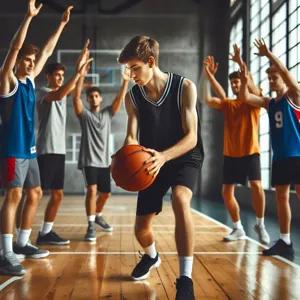
Improving your court vision is a game changer when it comes to elevating your basketball IQ. Court vision refers to your ability to see the entire playing field, anticipate movements, and make split-second decisions that can turn the tide of a game. The best players in the league possess an uncanny knack for knowing where their teammates are, predicting the actions of defenders, and reading the flow of the game.
To enhance your court vision, start by practicing drills that encourage head-up play. Instead of focusing solely on the basketball while dribbling, challenge yourself to keep your head up and scan the court for passing options, open teammates, or potential scoring opportunities. A simple drill involves dribbling through cones while maintaining eye contact with a partner stationed at different points on the court. This exercise not only improves your dribbling but also reinforces the habit of looking for passing lanes.
Another effective technique is to watch film of yourself and other skilled players. Analyzing game footage allows you to identify how top players leverage their court vision to create plays. Pay attention to how they position themselves, where they look before making a pass, and how they anticipate defenders’ movements. This analysis can help you develop a mental framework for your decision-making on the court.
Additionally, practice visualization techniques off the court. Spend time mentally going through plays and imagining various game scenarios. Picture yourself making the perfect pass, executing a well-timed cut, or reading a defender’s intentions. This mental rehearsal can significantly enhance your ability to react quickly and effectively during actual gameplay.
Lastly, engage in small-sided games, such as 3-on-3 or 4-on-4, where space is limited and quick thinking is essential. These formats force you to make faster decisions, communicate with teammates, and develop a more nuanced understanding of spacing and movement. The more you put yourself in these dynamic situations, the more instinctive your court vision will become.
Incorporating these strategies into your training regimen will not only improve your court vision but also elevate your overall basketball IQ, making you a more complete and effective player on the court.
6. Strategy #5: Enhance Your Decision-Making Skills
Enhancing your decision-making skills is crucial for elevating your basketball IQ and overall performance on the court. In the fast-paced world of basketball, split-second decisions can make the difference between a game-winning play and a costly turnover. To sharpen this skill, you must cultivate a mindset that prioritizes quick thinking and situational awareness.
Start by immersing yourself in the game. Watch game footage, focusing not just on the ball but on how players react to various situations. Analyze the decisions made by high-level players in different scenarios—how they read defenses, when to pass versus shoot, and how to exploit mismatches. This observational practice will help you internalize key concepts and improve your on-court instincts.
Additionally, consider practicing with game-like drills that mimic real-game situations. Incorporate exercises that require you to make rapid decisions under pressure. For example, set up 3-on-2 or 4-on-3 scrimmages where you must quickly evaluate your options, decide who to pass to, and anticipate the defense’s moves. The more you put yourself in these high-pressure situations during practice, the more comfortable you will become in actual games.
Communication also plays a vital role in effective decision-making. Develop a rapport with your teammates to foster a culture of trust and understanding. When you’re in sync with your team, it becomes easier to predict each other’s movements and intentions, allowing for more fluid and effective decision-making during crucial moments.
Lastly, don’t shy away from self-reflection. After each game, take the time to review your decisions. Were there moments when you could have passed instead of shooting? Did you recognize an open teammate in time? By critically assessing your choices, you’ll identify patterns in your decision-making process, enabling you to make adjustments and improve over time.
By sharpening your decision-making skills, you’ll not only enhance your basketball IQ but also become a more effective player, capable of rising to the occasion when it matters most.
7. Strategy #6: Engage in Situational Drills
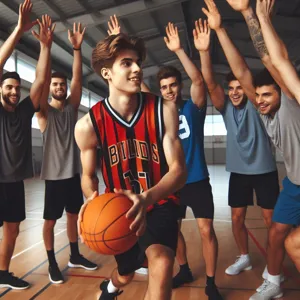
Engaging in situational drills is a powerful way to elevate your basketball IQ and prepare you for the unpredictable nature of a game. These drills simulate specific game scenarios, allowing you to practice decision-making, teamwork, and execution under pressure. Unlike traditional drills that focus solely on skill development—like shooting or ball handling—situational drills place you in realistic conditions where you must think critically and act quickly.
Imagine a scenario where your team is down by two points with only 30 seconds left on the clock. In a situational drill, you might work on executing a last-minute play, focusing on spacing, timing, and communication with your teammates. You’ll learn to assess the defense, decide whether to go for a quick shot or drive to the basket, and how to position yourself for a potential rebound or defensive stop.
The beauty of situational drills lies in their adaptability; you can tailor them to address specific areas of improvement or to mimic the playing style of your upcoming opponents. Whether it’s practicing a two-minute offense, working on late-game free-throw situations, or running through defensive rotations, these drills will sharpen your instincts and enhance your ability to read the game as it unfolds.
Additionally, incorporating feedback from coaches and teammates during these drills can further enhance your understanding of basketball strategies. By discussing what worked, what didn’t, and why, you’ll not only improve your performance but also cultivate a deeper appreciation for the nuances of the game.
So, lace up your sneakers, gather your teammates, and start incorporating situational drills into your practice routine. With consistent effort and focus, you’ll find yourself making smarter plays, anticipating opponents’ moves, and ultimately unlocking your full potential on the court.
8. Strategy #7: Communicate Effectively with Teammates
Effective communication is the backbone of any successful basketball team. It goes beyond mere shouting of plays or calling for the ball; it involves a fundamental understanding of your teammates’ strengths, weaknesses, and tendencies. When players communicate well, they can anticipate each other’s movements, leading to smoother plays and a more cohesive team effort on the court.
Start by developing a common vocabulary with your teammates. Establishing specific terms for plays, defensive strategies, and even simple signals can streamline on-court interactions and reduce confusion during high-pressure situations. For example, a quick hand signal for a pick-and-roll or a verbal cue for a fast break can make all the difference in the heat of the moment.
Additionally, non-verbal communication plays a crucial role in basketball. Body language, eye contact, and gestures can convey intentions without the need for words. Being aware of your teammates’ non-verbal cues can enhance your understanding of their actions, allowing for quicker adjustments and reactions during gameplay.
Practice open lines of communication in both practice and games. Encourage your teammates to share feedback, whether it’s constructive criticism or praise. This creates a supportive environment where everyone feels valued and motivated to improve. Remember, effective communication isn’t just about leading; it’s also about listening. Pay attention to what your teammates have to say and show that you genuinely care about their perspectives.
Finally, embrace the power of encouragement. A simple shout of support during a tough moment or a high-five after a great play can significantly boost team morale. When teammates feel connected and valued, their trust in each other deepens, leading to enhanced performance on the court. By honing your communication skills, you not only elevate your basketball IQ but also contribute to a more unified and successful team dynamic.
9. The Role of Coaching in Developing Basketball IQ
Coaching plays a pivotal role in developing a player’s basketball IQ, acting as both a guide and a catalyst for growth on the court. A knowledgeable coach can illuminate the complexities of the game, breaking down plays and strategies in a way that makes them accessible and understandable. Their insights into offensive and defensive schemes help players see the game from multiple angles, fostering a deeper comprehension of positioning, timing, and decision-making.
Effective coaching goes beyond rote drills; it involves creating an environment that encourages players to ask questions, challenge assumptions, and think critically. A good coach will encourage players to watch game film, analyze their performances, and study their opponents’ tendencies. This analytical approach not only sharpens a player’s tactical awareness but also instills a love for the game that drives continuous improvement.
Moreover, a coach’s ability to communicate complex concepts in relatable terms can significantly enhance a player’s IQ. They can draw parallels between basketball and everyday situations, helping players grasp the importance of teamwork, communication, and adaptability. A coach who fosters open dialogue and feedback empowers players to take ownership of their learning, transforming them from mere participants into strategic thinkers.
In essence, the right coaching can unlock a player’s potential, equipping them with the tools necessary to elevate their understanding of the game. By investing in a coach who prioritizes basketball IQ development, players can cultivate a mindset that not only improves their individual performance but also enhances the overall dynamics of their team.
10. Mental Conditioning: Building a Strong Mindset
In the world of basketball, athleticism and skill are undeniably important, but a strong mindset can be the game-changer that elevates your performance. Mental conditioning is the practice of training your mind to handle the pressures of the game, make quick decisions, and maintain focus during high-stakes moments. Just as players dedicate hours to perfecting their shooting form or dribbling speed, developing mental fortitude is equally essential for unlocking your full potential on the court.
Begin by incorporating visualization techniques into your training regimen. Picture yourself executing plays flawlessly—imagine the feel of the ball in your hands, the sound of the net swishing as you sink a three-pointer, or the adrenaline rush of making a crucial defensive stop. Visualization not only helps to build confidence but also prepares your mind for real-game scenarios, allowing you to react instinctively when the pressure is on.
Additionally, practice mindfulness and breathing exercises to enhance your focus and reduce anxiety. Before stepping onto the court, take a few moments to center yourself. Close your eyes, inhale deeply, and let go of distractions. This practice not only calms your nerves but also sharpens your concentration, enabling you to stay present during the game and make smarter decisions.
Another key aspect of mental conditioning is developing resilience. Basketball is a game filled with ups and downs—missed shots, turnovers, and tough losses. Embrace these challenges as opportunities for growth. Learn to maintain a positive attitude and bounce back quickly from setbacks. This mental toughness will not only improve your performance but also inspire your teammates and foster a winning culture within your team.
Lastly, consider working with a sports psychologist or mental conditioning coach who can provide tailored strategies and support. They can help you identify mental barriers, set realistic goals, and develop a personalized plan to strengthen your basketball IQ. By investing in your mental game, you’ll not only enhance your skills on the court but also cultivate a mindset that champions perseverance, focus, and success. Embrace the journey of mental conditioning, and watch as your basketball IQ soars, unlocking new levels of performance and enjoyment in the game you love.
11. The Importance of Teamwork and Collaboration
Basketball is often celebrated as an individual sport, showcasing dazzling displays of athleticism and skill. However, the true essence of the game lies in teamwork and collaboration. A player with a high basketball IQ understands that success on the court is not solely about personal stats; it’s about the synergy between teammates and how well they can work together to achieve a common goal.
Teamwork in basketball goes beyond simply passing the ball or setting screens. It involves a deep understanding of each player’s strengths and weaknesses, and how these can be leveraged to create scoring opportunities. For instance, a point guard must recognize when to drive to the basket and when to dish out an assist, while a forward may need to adjust their positioning based on the defensive alignment. This dynamic interplay requires constant communication and a shared vision among players, fostering a sense of trust and accountability.
Moreover, collaboration extends to defensive strategies as well. A well-coordinated defense can stifle even the most talented offensive players. Understanding when to switch on screens, how to help a teammate in distress, and knowing when to collapse the paint can make a significant difference in the outcome of a game. Players who prioritize teamwork are more likely to anticipate each other’s moves, leading to more fluid transitions and effective plays.
Cultivating a culture of teamwork also means embracing the idea of selflessness. The best teams are those where players are willing to sacrifice personal glory for the greater good, whether that means making the extra pass, diving for loose balls, or defending diligently. Encouraging this mindset not only enhances overall performance but also boosts morale and strengthens the bonds between players.
Lastly, embracing teamwork fosters a learning environment where players can grow together. By sharing insights and experiences, teams can develop a higher basketball IQ collectively, leading to improved decision-making and execution during games. As you work on enhancing your basketball IQ, remember that collaboration is not just a strategy; it’s a cornerstone of success on the court. Embrace it, and watch your game—and your team—reach new heights.
12. Tracking Your Progress: Setting Goals for Improvement
Tracking your progress is a vital component of enhancing your basketball IQ. Just as players meticulously analyze their game film, you should establish clear, measurable goals that will guide your development and help you stay focused on your journey toward improvement. Setting both short-term and long-term goals allows you to break down your aspirations into manageable chunks, making it easier to monitor your progress and celebrate small victories along the way.
Start by identifying specific areas of your game that you want to improve. This might include enhancing your shooting percentage, increasing your understanding of defensive schemes, or mastering the art of playmaking. Once you’ve pinpointed these areas, set SMART goals—Specific, Measurable, Achievable, Relevant, and Time-bound. For example, instead of simply stating, “I want to shoot better,” a SMART goal would be, “I will improve my three-point shooting percentage from 30% to 40% over the next three months.”
Regularly track your performance in these areas. Consider keeping a journal where you log your practices, note your shooting percentages, and reflect on your understanding of game strategies. This not only helps you see how far you’ve come, but also allows you to identify patterns in your performance, such as which drills yield the best results or which areas require more attention.
Additionally, don’t shy away from seeking feedback. Engage with coaches, trainers, or even more experienced teammates to gain insights into your progress. They can provide valuable perspectives that you might overlook, helping you refine your goals and approaches.
By consistently tracking your progress and adjusting your goals as needed, you cultivate a growth mindset that pushes you to continually evolve as a player. Remember, improvement in basketball—much like in life—doesn’t happen overnight. It’s a journey, and tracking your progress will illuminate that path, helping you unlock your full potential on the court.
13. Overcoming Common Challenges in Developing Basketball IQ
Developing a high basketball IQ is vital for any player aspiring to elevate their game, yet the journey is often fraught with challenges that can hinder progress. Understanding these common obstacles is the first step toward overcoming them and unlocking your full potential on the court.
One of the most prevalent challenges is the tendency to focus solely on physical skills, such as shooting and dribbling, while neglecting the mental aspects of the game. It’s easy to get caught up in perfecting your jump shot or sprinting drills, but without a solid understanding of game strategy, positioning, and decision-making, these skills may fall short in real-game scenarios. To combat this, dedicate time to studying game footage, analyzing plays, and discussing strategies with coaches and teammates.
Another hurdle is the fear of making mistakes. Players often hesitate to express their understanding of the game due to the worry of being criticized for their decisions on the court. It’s essential to shift this mindset; mistakes are valuable learning opportunities that can lead to significant improvement. Embrace a growth-oriented approach—view each game as a chance to learn and refine your understanding of basketball dynamics.
Moreover, the fast-paced nature of basketball can create information overload, making it difficult to absorb and apply knowledge effectively. To overcome this, break down your learning into manageable segments. Focus on one aspect of the game at a time, whether it’s offensive spacing, defensive rotations, or reading opponents’ movements. This targeted approach makes it easier to grasp complex concepts and integrate them into your play.
Lastly, the lack of access to quality coaching or mentorship can be a significant barrier, especially for players in under-resourced areas. If you find yourself in this situation, seek out online resources, join basketball forums, or participate in local camps and clinics. Engaging with a community of players and coaches can provide invaluable insights and support that propel your basketball IQ forward.
By recognizing and addressing these challenges, you can pave the way for a deeper understanding of the game. Remember, developing a high basketball IQ is a continuous journey that requires patience, dedication, and a willingness to learn from every experience on the court. With persistence and the right strategies, you’ll be well on your way to unlocking your full potential as a player.
14. Resources for Continuous Learning and Growth
Improving your basketball IQ is a journey that requires dedication and a commitment to continuous learning. Thankfully, there is a wealth of resources available to help you along the way. Whether you’re a player, coach, or avid fan, engaging with these resources can deepen your understanding of the game and enhance your performance on the court.
**Books**: Start with some classic basketball literature that delves into strategy, psychology, and the nuances of gameplay. Titles like “The Basketball Handbook” by Dick DeVenzio and “The Art of Basketball” by the legendary Phil Jackson offer invaluable insights into the mental aspects of the sport as well as strategic frameworks that can elevate your game.
**Online Courses and Webinars**: In our digital age, many platforms offer online courses specifically tailored to basketball. Websites like Udemy, Coursera, and Skillshare feature classes taught by experienced coaches and former players. These courses often cover everything from fundamental skills to advanced tactics, making it easy for you to learn at your own pace.
**Podcasts and YouTube Channels**: Tune into basketball podcasts like “The Lowe Post” or “Knuckleheads with Quentin Richardson & Darius Miles” for discussions with players and coaches that provide insider knowledge. YouTube is another treasure trove of information, with channels like “ILoveBasketballTV” and “Coach Daniel” offering drills, strategy breakdowns, and analytical discussions that can sharpen your game understanding.
**Film Study**: Watching games is essential for improving your basketball IQ. Instead of passively enjoying a game, analyze player movements, team strategies, and decision-making processes. Break down plays frame by frame, and don’t hesitate to replay pivotal moments to understand the choices made by players.
**Engage with Coaches and Mentors**: Never underestimate the value of personal interaction. Seeking out coaches, attending clinics, or participating in workshops can provide you with direct feedback and tailored advice. A mentor can offer unique perspectives and challenge you to think critically about your approach to the game.
**Join Discussion Forums and Communities**: Engage with fellow basketball enthusiasts on platforms like Reddit, basketball-specific Facebook groups, or dedicated forums. Sharing insights, asking questions, and discussing games can expose you to different viewpoints and strategies that you may not have considered.
By leveraging these resources, you can foster a mindset of continuous improvement and growth. Remember, basketball IQ is not just about what you know; it’s about how you apply that knowledge on the court. Stay curious, stay engaged, and watch as your understanding of the game evolves, unlocking your full potential as a player or coach.
15. Conclusion: Embracing the Journey to Unlock Your Potential
In the fast-paced world of basketball, enhancing your basketball IQ isn’t just a destination; it’s a continuous journey filled with learning, growth, and self-discovery. As you implement the strategies outlined in this blog, remember that improvement comes with time, dedication, and a willingness to embrace both successes and setbacks. Basketball is as much about mental acuity as it is about physical skill; the best players are those who understand the game on multiple levels, who can anticipate plays, read defenses, and make split-second decisions.
Embrace the process of enhancing your basketball IQ by staying curious and open-minded. Watch games not just as a fan, but as a student of the game. Analyze plays, discuss strategies with coaches and teammates, and seek out feedback that can help you refine your understanding. Remember, every practice session is an opportunity to learn, every game a chance to apply what you’ve absorbed.
Celebrate the small victories along the way. Each time you make a smarter decision on the court, recognize it as a step toward unlocking your full potential. Surround yourself with fellow players and mentors who inspire and challenge you, creating a supportive environment that fosters growth.
Ultimately, the journey to improve your basketball IQ is about more than just becoming a better player; it’s about developing confidence, resilience, and a deeper love for the game. By committing yourself to this path, you’ll not only elevate your performance but also enrich your overall basketball experience. So lace up your sneakers, hit the court, and enjoy every moment of this transformative journey. Your potential awaits!
In conclusion, elevating your basketball IQ is a journey that combines knowledge, practice, and a deep understanding of the game. By implementing the seven strategies we’ve discussed, you’ll not only enhance your decision-making skills on the court but also foster a greater appreciation for the intricacies of basketball. Whether you’re a player looking to refine your skills or a coach aiming to guide your team to victory, these insights will empower you to unlock your full potential. Remember, basketball is as much a mental game as it is a physical one; the more you learn and adapt, the more effectively you can contribute to your team’s success. So lace up your sneakers, hit the court, and start applying these strategies—your growth as a player is just a game away!

